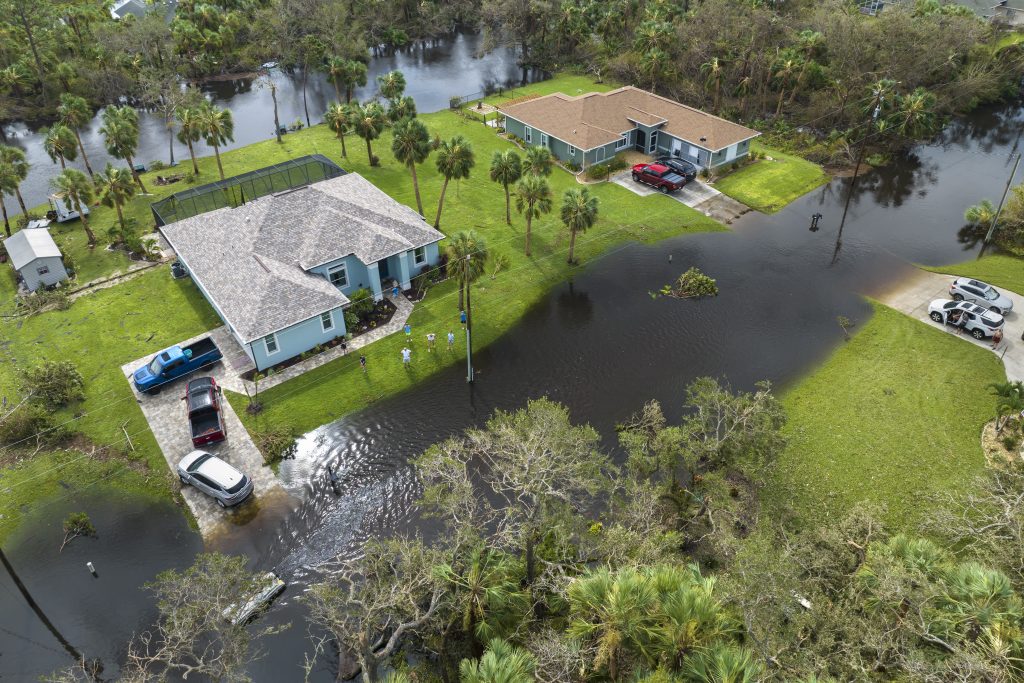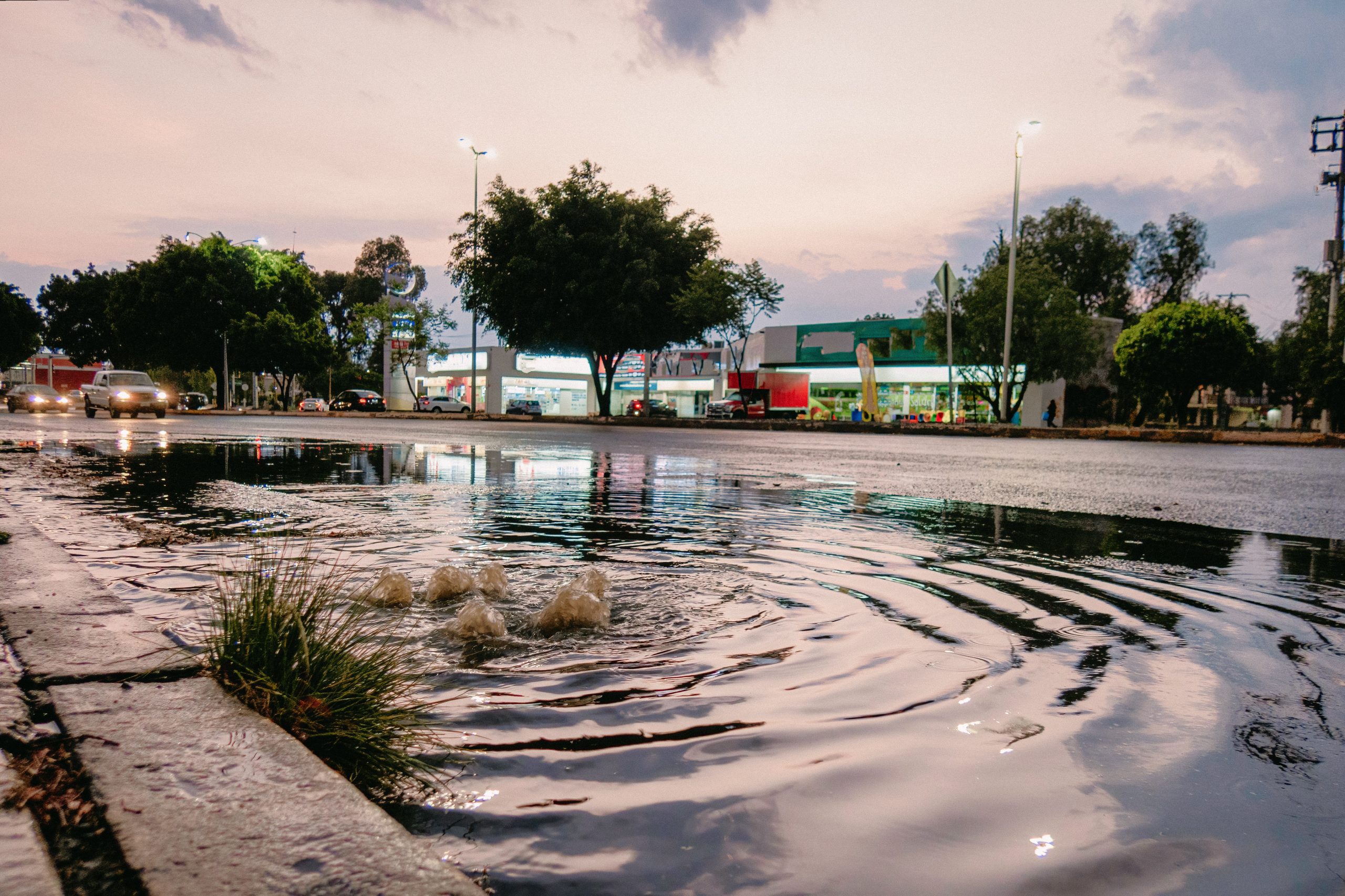With hurricane season around the corner, it is time for homeowners to protect their landscape or restore their flooded yard in Conroe TX and the surrounding areas to its former health. The Lone Star State’s susceptibility to sudden downpours and storms can leave landscapes—plants, lawns, trees, hardscapes, and pools—vulnerable to significant damage. Understanding the signs of flood damage and knowing how to address them are key to maintaining a healthy and vibrant landscape. The below guide helps you identify and rectify the damage to your flooded outdoor space.
Recognizing the Signs of Damage to a Flooded Yard

If you’ve recently experienced a flooded yard in Conroe, TX, it’s crucial to quickly assess the extent of the damage to your landscape. Floods can leave behind a trail of destruction, affecting everything from your smallest plants to large trees and even built structures. Here’s how to spot the signs of flood-related damage in various areas of your yard:
Plants and Shrubs
Floodwater can suffocate plants and shrubs by cutting off their oxygen supply, which is crucial for their survival. This excessive water logging leads to conditions like root rot. The initial signs of distress in plants include wilting and the discoloration of leaves, turning yellow or brown. You might also notice that the stems and roots become unusually soft and mushy. To aid recovery, it’s important to trim back the damaged parts to prevent energy waste. Additionally, improving soil drainage and aerating the area can help reduce water accumulation and promote air penetration into the soil.
Lawns
Lawns are particularly susceptible to flood damage, often remaining saturated long after the water recedes. This saturation can suffocate grass roots and lead to fungal diseases. The main signs of a waterlogged lawn are a spongy texture when walked upon and discolored, brown patches where the grass has died. To facilitate recovery, start by removing any debris and use a garden fork or aerator to puncture the soil, which helps air and nutrients reach the roots. If the lawn does not recover, overseeding or completely re-turfing may be necessary. This Lawnstarter article offers more tips on how to save your lawn after flooding.
Trees
Trees are particularly vulnerable to uprooting during floods due to softened soil and strong winds. Post-flood, check for leaning trees, exposed roots, or cracked soil at the base, as these signs can indicate destabilization. Also, look for bark discoloration and premature leaf drop, which suggest water stress. Moreover, you need to stabilize affected trees by staking them temporarily and prune any broken limbs to prevent further damage. Consulting an arborist is recommended if there are major concerns about a tree’s structural integrity.
Hard Landscapes
Inspect your pathways, patios, and decking for any signs of erosion or sediment deposit. Floodwaters can shift pavers, crack concrete, and destabilize structures. Look for uneven surfaces, visible gaps, and loose materials. It’s crucial to repair these damages promptly to prevent tripping hazards and further deterioration. Reseating pavers, refilling joints with sand, and patching up cracks in concrete are effective ways to restore the integrity of your hardscaped areas.
Pools
Floodwaters often introduce contaminants and debris into pools, disrupting chemical balances and potentially damaging filtration systems. Murky water, visible debris, and a foul smell are immediate signs that your pool has been affected by flooding. Clean the pool by draining the water, scrubbing the walls and floor, and checking the filtration system for damage. Once cleaned, the pool should be refilled, and chemicals must be carefully balanced to restore safe and enjoyable swimming conditions.
Landscape Design
Overall landscape design can suffer from erosion, sedimentation, and debris accumulation. Check for altered terrain contours, blocked drainage areas, and any visible damage to garden fixtures like lights, benches, or decorative elements. Furthermore, removing debris and regrading areas where water pools can help prevent future flooding. Consider redesigning parts of your landscape to include features like rain gardens or swales, which can naturally manage water flow and enhance the aesthetic of your garden.
Learn how to flood-proof your yard before severe storms: Flood-Proof Your Yard in The Woodlands, TX.
Correcting Damage to a Flooded Yard

When addressing a flooded yard in Conroe, TX, it’s essential to act swiftly to avoid long-term damage. Determining the impact on vegetation, structures, and soil can help you formulate a recovery plan that restores your yard’s health and aesthetics. Although there are things you can do on your own to aide in the recovery of your yard, landscape professionals might be needed. For comprehensive recovery, consider consulting with landscape professionals who specialize in flood damage restoration. Furthermore, googling local landscape design companies near me will put you in touch with top rate local professionals. In the meantime, here are some actions you might take to triage or mend your flooded yard in Conroe, TX.
Revitalizing Plants
- Trim Damaged Parts: Cut back any dead or dying foliage to help plants conserve energy and focus on healthy growth.
- Improve Drainage: Add organic material like compost to enhance soil structure, promoting better drainage and aeration.
- Elevate Plants: For repeatedly flooded areas, consider raising garden beds to keep roots above the water-prone zones.
Lawn Recovery
- Debris Removal: Clear all debris to prevent fungal growth and ensure sunlight reaches the grass.
- Aeration: Use a garden fork or mechanical aerator to perforate the soil, improving oxygen circulation and encouraging root growth.
- Reseeding: Overseed the lawn to fill in dead patches, choosing flood-resistant grass varieties if flooding is a common issue.
Tree Care
- Stabilization: Use stakes and ties to support recently shifted or tilted trees, helping them reestablish stability.
- Pruning: Remove broken or damaged limbs to help trees heal faster and prevent pests or diseases from entering the wounds.
- Consult an Arborist: For severe damage, a professional assessment may be necessary to decide whether a tree can be saved or needs removal.
Repairing Hard Landscapes
- Reposition Pavers and Stones: Settle any displaced elements back into position and refill joints with fresh sand or gravel to secure them.
- Concrete Repairs: Small cracks can be filled with a suitable concrete patch product, while larger damaged areas might need to be professionally re-poured.
- Check Drainage Systems: Ensure that all drainage channels are clear of debris to prevent future water accumulation.
Pool Restoration
- Drain and Clean: Completely drain the pool and scrub down all surfaces to remove debris and algae buildup.
- Filter Maintenance: Inspect and clean the filter system thoroughly; replace elements if they show damage or clogging.
- Chemical Rebalance: After refilling the pool, adjust the chemical levels carefully to ensure the water is safe for swimming.
Redesigning Landscapes
- Enhance Drainage Features: Incorporate features like French drains, rain gardens, or dry wells to manage excess water more effectively.
- Choose Resilient Plants: Select native or water-tolerant species that are more likely to thrive in wet conditions.
- Elevation Adjustments: Modify the landscape contour to direct water flow away from critical areas like buildings and delicate garden zones.
Conclusion

Flooding can be devastating, but with prompt and effective action, you can mitigate its impact on your flooded yard in Conroe, TX. By understanding the signs of damage and implementing the right restoration techniques, you can help ensure that your garden remains a thriving oasis, even after the storm passes. Remember, when in doubt, consulting with landscaping professionals and arborists can provide the expertise needed to fully restore your outdoor spaces.


